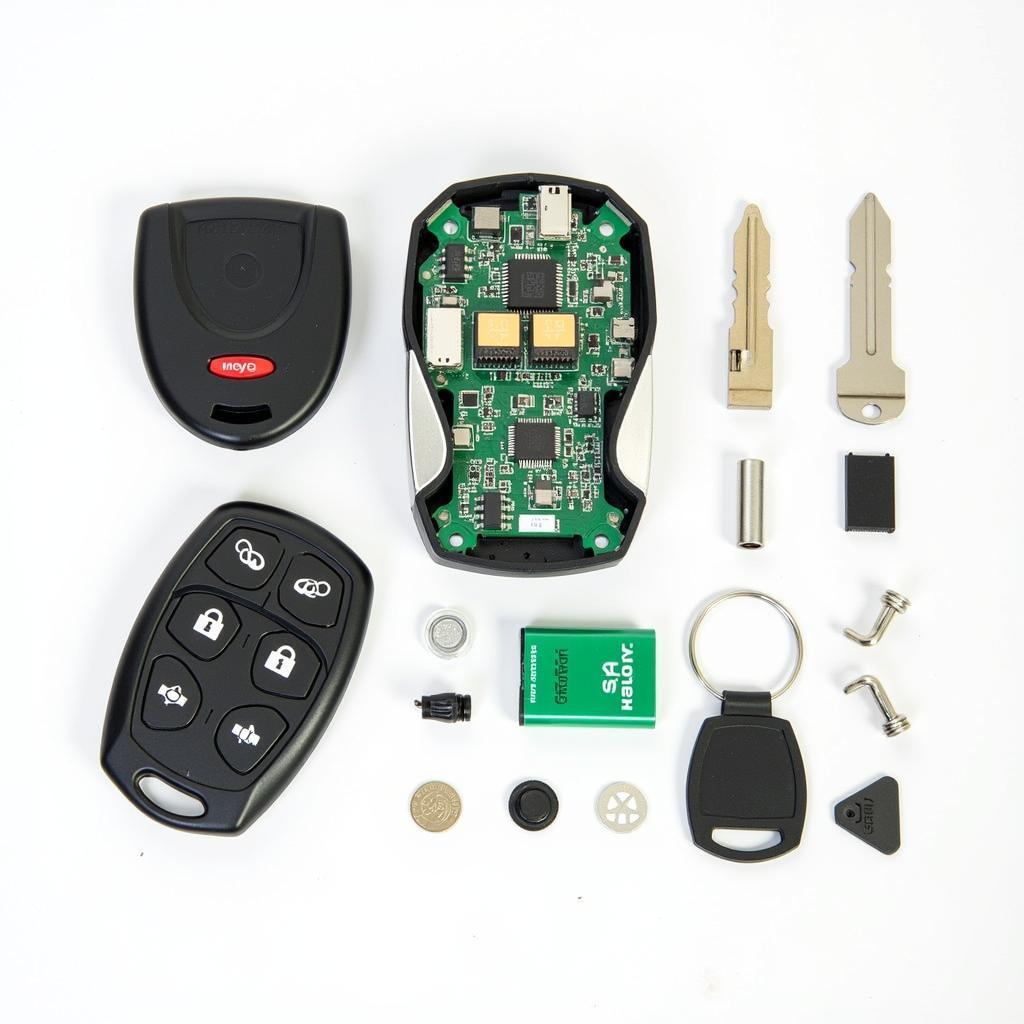The dreaded brake warning light on your Toyota Tundra. It can be a minor annoyance or a sign of a serious problem. Understanding what causes this light to illuminate is crucial for your safety and the longevity of your truck. This comprehensive guide covers everything you need to know, from simple checks to more complex diagnostic procedures.
Common Causes of a Brake Warning Light
There are several reasons why your Toyota Tundra’s brake warning light might be on. Some are easy fixes, while others require professional attention.
-
Low Brake Fluid: This is the most common culprit. Check your brake fluid reservoir. If it’s low, brake warning light toyota tundra indicates a leak somewhere in the system. Don’t drive until you’ve identified and fixed the leak.
-
Worn Brake Pads: Brake pads have wear indicators that trigger the warning light when they reach a critical thickness. Replacing your brake pads is a relatively simple procedure.
-
Faulty Brake Sensor: Sometimes, the sensor itself can malfunction. This requires a diagnostic scan to confirm.
-
Parking Brake Engaged: This might seem obvious, but it’s often overlooked. Double-check to make sure your parking brake is fully released.
-
ABS Issue: If there’s a problem with your Anti-lock Braking System (ABS), the warning light might come on. This requires specialized diagnostic equipment to pinpoint the exact issue.
Troubleshooting Your Tundra’s Brake Warning Light
Before rushing to a mechanic, you can perform some basic troubleshooting steps.
-
Check the parking brake. Make sure it’s fully disengaged.
-
Inspect the brake fluid level. Top it off if needed. However, if it continually drops, you have a leak that needs immediate attention.
-
Visually inspect your brake pads. If they appear thin, it’s time for a replacement. 2006 toyota tundra brake warning light might indicate worn brake pads, especially if the truck has high mileage.
When to Seek Professional Help
If your brake warning light stays on after these basic checks, it’s time to consult a professional. Don’t delay, as ignoring the warning light can lead to serious safety risks.
-
Persistent Low Brake Fluid: This indicates a leak that needs immediate professional attention.
-
Suspected ABS Issue: toyota tundra brake system warning light might signal an ABS malfunction, requiring specialized diagnostic tools.
-
You’re Not Comfortable Working on Brakes: Brakes are critical safety components. If you’re not confident in your mechanical abilities, leave it to the experts.
Why is my brake light flashing?
A flashing brake light is usually a more urgent warning. It often indicates a serious issue with the ABS or a critical loss of brake fluid pressure. Don’t drive with a flashing brake light. Have your vehicle towed to a repair shop immediately.
How much does it cost to fix a brake warning light on a Toyota Tundra?
The cost of repair varies depending on the underlying problem. A simple brake fluid top-up might be free, while replacing the entire brake system can cost significantly more. 2007 toyota tundra brake warning light can sometimes be related to a faulty sensor which is a less expensive repair.
“Regular brake inspections are crucial for preventing major problems. Catching issues early can save you time, money, and most importantly, keep you safe,” says John Miller, ASE Certified Master Technician.
What if my brakes feel spongy?
Spongy brakes are a sign of air in the brake lines. This can be a dangerous condition, requiring immediate bleeding of the brake system. 2012 toyota tundra brake warning light can often accompany this issue.
“Ignoring a brake warning light is like ignoring a ticking time bomb. Address the issue promptly to avoid potential disasters,” warns Sarah Chen, Automotive Safety Expert.
Conclusion
Addressing a brake warning light on your Toyota Tundra is crucial for your safety and the health of your vehicle. By understanding the potential causes and taking appropriate action, you can ensure safe and reliable braking performance. Don’t delay – if you’re unsure about any aspect of brake repair, seek professional help immediately.
FAQ
- Can I drive with the brake warning light on? It’s not recommended. While you might be able to drive short distances, it’s crucial to address the underlying issue as soon as possible.
- How often should I check my brake fluid? Checking your brake fluid level every month is a good practice.
- What type of brake fluid does a Toyota Tundra use? Consult your owner’s manual for the correct brake fluid type.
- Can I replace my own brake pads? If you have the necessary tools and mechanical knowledge, you can replace brake pads yourself. However, if you’re unsure, consult a professional.
- What does ABS stand for? ABS stands for Anti-lock Braking System.
- Why is my brake warning light flashing? A flashing brake light indicates a more serious issue, often related to the ABS or a critical loss of brake fluid pressure.
- How can I prevent my brake warning light from coming on? Regular maintenance, including brake inspections and fluid checks, is the best preventative measure.

